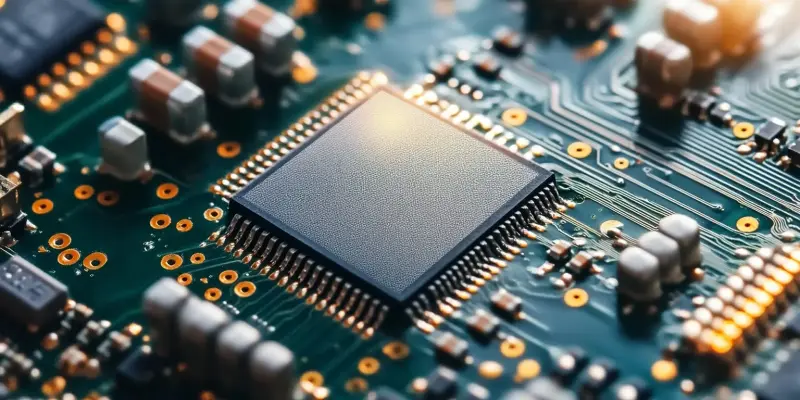Recent reports reveal a partnership between Intel and Taiwan Semiconductor Manufacturing Company (TSMC), sparking discussions about the potential revitalization of US chip manufacturing.With the semiconductor industry at the forefront of technological advancements, this collaboration between the two major rivals could significantly impact the global market. The proposed joint venture includes leveraging Intel’s US facilities to enhance production capabilities. This partnership emerges as part of efforts to fortify the United States’ strategic position in chip manufacturing, aligning with previous governmental initiatives aimed at restoring dominance in the sector. However, many uncertainties surround this deal, making its future effectiveness a subject for scrutiny.
Challenges and Differences
The collaboration between Intel and TSMC brings forth questions about the compatibility between their corporate cultures and management styles. This merger is reportedly characterized by TSMC’s rumored acquisition of a 20% stake in Intel’s Foundry division, a strategic move potentially designed to navigate the impact of tariffs by investing domestically within the US.These differences, spanning management practices, workforce philosophies, and technology roadmap planning, raise concerns about seamless integration. Moreover, TSMC’s management control over Intel could face extended timelines, potentially taking several years to establish efficiency and uniformity across operations. The task of harmonizing distinct corporate entities and achieving operational cohesion under these circumstances presents a formidable challenge.
Intel’s Foundry division has recently demonstrated promising advancements with its announced 18A process, indicating a potential pathway for economic recovery. The new CEO, Lip-Bu Tan, spearheads Intel’s renewed focus on building for clients, underscoring a strategic shift toward providing comprehensive foundry services. Nevertheless, skepticism persists regarding whether the collaboration can achieve the desired positive outcomes for Intel.The inherent differences between the entities and the complex nature of orchestrating such a partnership could pose significant obstacles, demanding careful navigation and strategic oversight.
Feasibility and Future Perspectives
While optimism surrounds the potential benefits of the Intel-TSMC partnership, realistic evaluations highlight critical challenges that could hinder success.The fundamental differences between Intel and TSMC could impede the smooth transition needed for a transformative collaboration. The feasibility of TSMC gaining complete management control over Intel remains uncertain, exacerbated by the substantial time investment required. Moreover, aligning technological roadmaps and corporate goals presents intricate difficulties that necessitate robust planning and adaptive strategies.
Looking forward, the implications of this partnership on the US semiconductor landscape are multifaceted. While the collaboration signifies a significant stride toward strengthening domestic manufacturing capabilities, the realization of its full potential hinges on overcoming substantial hurdles.Future considerations must address compatibility concerns and operational synchrony between the entities. As the semiconductor industry continues to evolve, the outcomes of this collaborative venture will play a crucial role in shaping the trajectory of US chip manufacturing, influencing competitive positioning on a global scale.
Conclusion
Recent reports detail an emerging partnership between Intel and Taiwan Semiconductor Manufacturing Company (TSMC). This collaboration, involving two major players in the semiconductor industry, has sparked discussions about the potential revival of US chip manufacturing.The semiconductor sector is pivotal in technological progress, and this union could considerably influence the global market. The tentative joint venture aims to utilize Intel’s US facilities to boost production capacities.This move is part of broader efforts to strengthen the United States’ strategic position in the chip manufacturing realm, resonating with previous government initiatives aimed at regaining dominance in the industry. Despite the promising outlook, numerous uncertainties loom over this deal, raising questions about its future success and effectiveness. The evolving technological landscape and fluctuating market conditions contribute to these doubts, making the outcome of this partnership a subject of close scrutiny and considerable industry interest.As the situation develops, all eyes will be on the results of this potentially significant collaboration.

